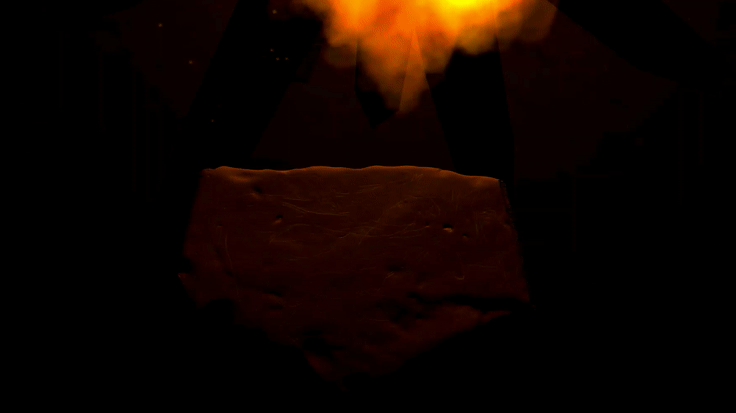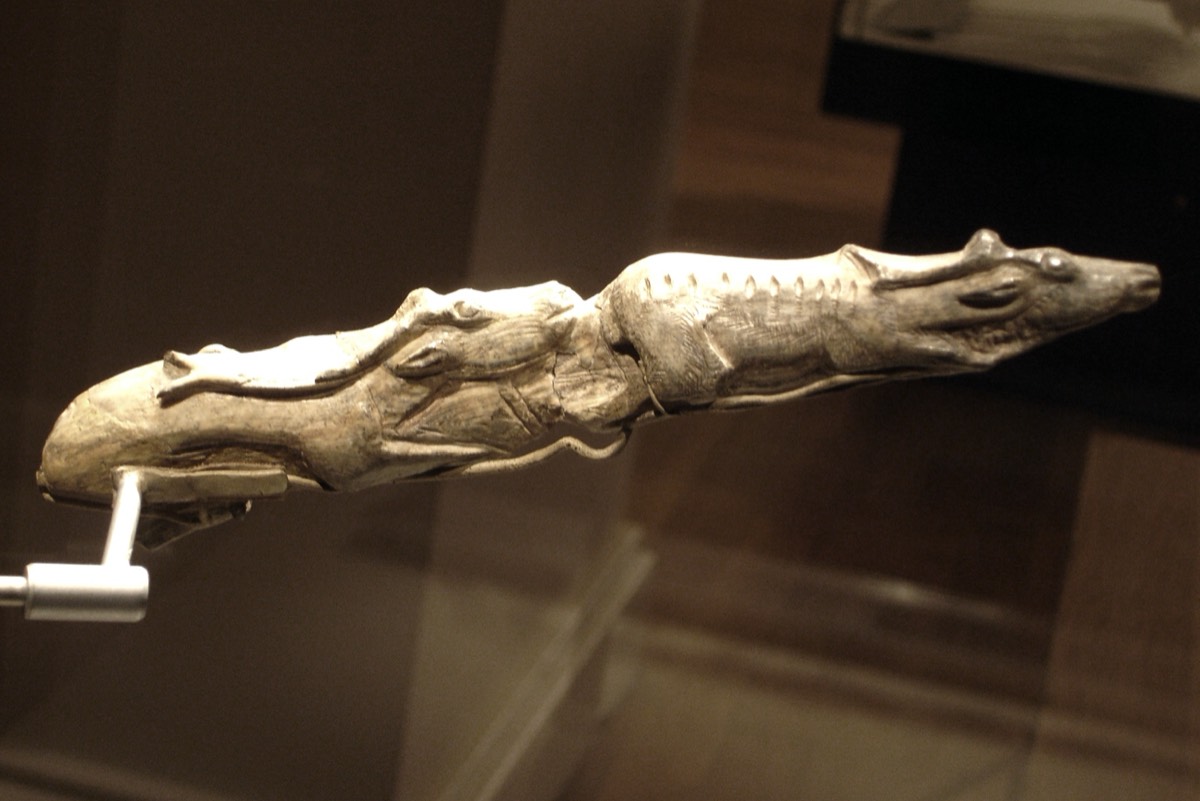Anthropology
Related: About this forumPrehistoric rock carvings may have been the first cartoons in history, new study suggests
By Tom Metcalfe published about 4 hours ago
Animal portraits may have been placed close to flickering fires to appear animated.

A virtual-reality simulation showing how a plaquette may have looked like under the flickering light of a fire. (Image credit: Izzy Wisher, CC-BY 4.0 )
The world's oldest moving pictures may not come from the late 19th century, but rather from thousands of years earlier: Pictures of ancient animals carved onto flat stones tens of thousands of years ago were deliberately placed around fires so they would look animated in the flickering firelight, a new study suggests.
Creating such animated carvings might have been a popular prehistoric activity as a family group sat around a fire. And at least some of the wall paintings and carvings found in ancient caves might also have been influenced by their appearance in the moving light and shadows of flames, the study suggests.
“When you get this dynamic light across the surface, suddenly all these animals start to move; they start to flicker in and out of focus,” archaeologist Andy Needham of the University of York in the United Kingdom told Live Science.
Needham is the lead author of a study published Wednesday (April 20) in the journal PLOS ONE that describes how some of the animal portraits carved on flat limestone rocks at a prehistoric shelter in southern France were exposed to hearth fires after they were made.
More:
https://www.livescience.com/prehistoric-carvings-animated-by-fire
Judi Lynn
(164,039 posts)VR simulations showed firelight would make images on engraved stones move and flicker.
JENNIFER OUELLETTE - 4/21/2022, 7:30 AM
In 1866, a French engineer named Peccadeau de l'Isle was working on the construction of a railway line in southern France, digging for artifacts along the banks of the River Aveyron in his spare time. Some 23 feet (7 meters) down, he found a number of prehistoric flint tools and prehistoric art. They included the famed Swimming Reindeer sculpture and a carved spear thrower in the shape of a mammoth, as well as numerous engraved flat stones called plaquettes, all created by the Magdalenian people sometime between 16,000 and 13,500 years ago.
The finds caused a sensation at the time, mostly because they provided evidence of a colder climate during this period and that men had co-existed during the ice age with mammoths. A new analysis by English archaeologists of the limestone plaquettes excavated by de l'Isle concludes that the stones may have been placed around fire hearths. The team's digital reconstructions showed that the engraved images would appear to move and flicker in the firelight, amounting to a kind of animated "fireside art." The details appear in a new paper published in the journal PLoS ONE.
“This must have been quite a powerful visual effect,” co-author Andrew Needham of the University of York told New Scientist—particularly in the context of a campfire. “This was likely an important social space. It might have been a place to share stories or chat and bond with each other after long days spent out in the landscape hunting and gathering. The art is not just the engraved lines on the rock, but those engraved lines experienced under the correct conditions of darkness and roving light. It changes our appreciation of what art was and how it was used by Magdalenian people.”

The 13,000-year-old Swimming Reindeer sculpture is now housed in London's British Museum.
Herb Neufeld/The British Museum, CC BY 2.0
Earlier cave-art lighting discoveries
In fact, the lighting conditions would have been very similar to those for prehistoric cave paintings, which also may have played with light and shadow to create "protomovies." That's a concept that surfaced in the 1990s, after a media studies professor at Fordham University named Edward Wachtel visited several famous caves in southern France, including Lascaux, Font-de-Gaume, Les Combarelles, and La Mouthe. Wachtel was puzzled by what he called "spaghetti lines" on the drawings,
partially obscuring them. There were also images of an ibex with two heads, or a bull drawing superimposed over the drawing of a deer.
More:
https://arstechnica.com/science/2022/04/stone-age-people-may-have-gathered-at-night-to-watch-animated-fireside-art/
~ ~ ~
Further reading:
Archaeologists recreated three common kinds of Paleolithic cave lighting
Experiments could enhance our understanding of the origin of prehistoric art in caves.
JENNIFER OUELLETTE - 6/19/2021, 1:23 PM
https://arstechnica.com/science/2021/06/archaeologists-recreated-three-common-kinds-of-paleolithic-cave-lighting/
l
The Magistrate
(96,043 posts)Though I suspect something more than entertainment would have lain behind it. It's hard for modern people to appreciate what an omen-haunted world of magic once suffused all daily and nocturnal life.
Judi Lynn
(164,039 posts)One would think they would have also had a deepened bonding effect on the participants.